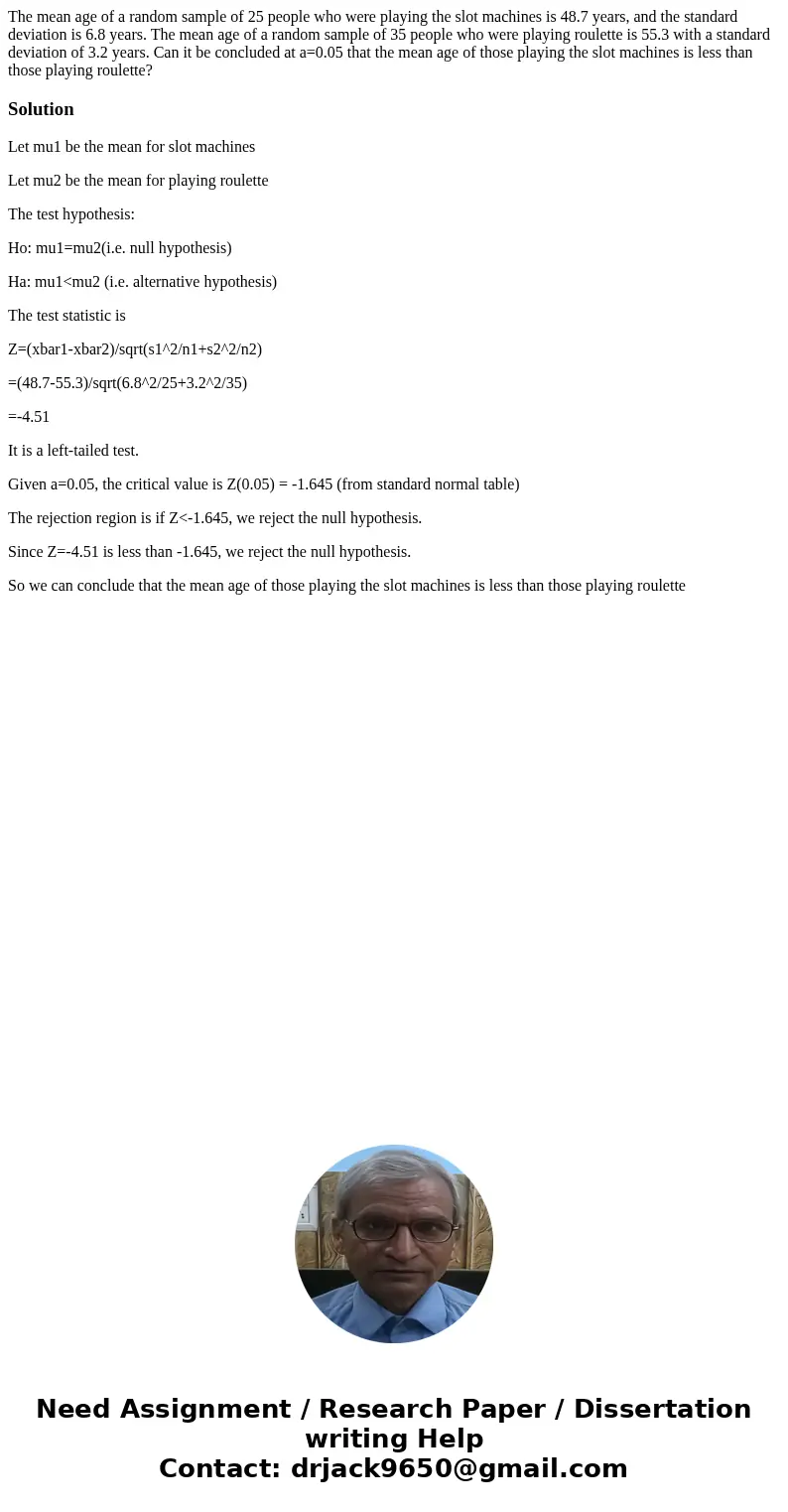The mean age of a random sample of 25 people who were playin
The mean age of a random sample of 25 people who were playing the slot machines is 48.7 years, and the standard deviation is 6.8 years. The mean age of a random sample of 35 people who were playing roulette is 55.3 with a standard deviation of 3.2 years. Can it be concluded at a=0.05 that the mean age of those playing the slot machines is less than those playing roulette?
Solution
Let mu1 be the mean for slot machines
Let mu2 be the mean for playing roulette
The test hypothesis:
Ho: mu1=mu2(i.e. null hypothesis)
Ha: mu1<mu2 (i.e. alternative hypothesis)
The test statistic is
Z=(xbar1-xbar2)/sqrt(s1^2/n1+s2^2/n2)
=(48.7-55.3)/sqrt(6.8^2/25+3.2^2/35)
=-4.51
It is a left-tailed test.
Given a=0.05, the critical value is Z(0.05) = -1.645 (from standard normal table)
The rejection region is if Z<-1.645, we reject the null hypothesis.
Since Z=-4.51 is less than -1.645, we reject the null hypothesis.
So we can conclude that the mean age of those playing the slot machines is less than those playing roulette

 Homework Sourse
Homework Sourse